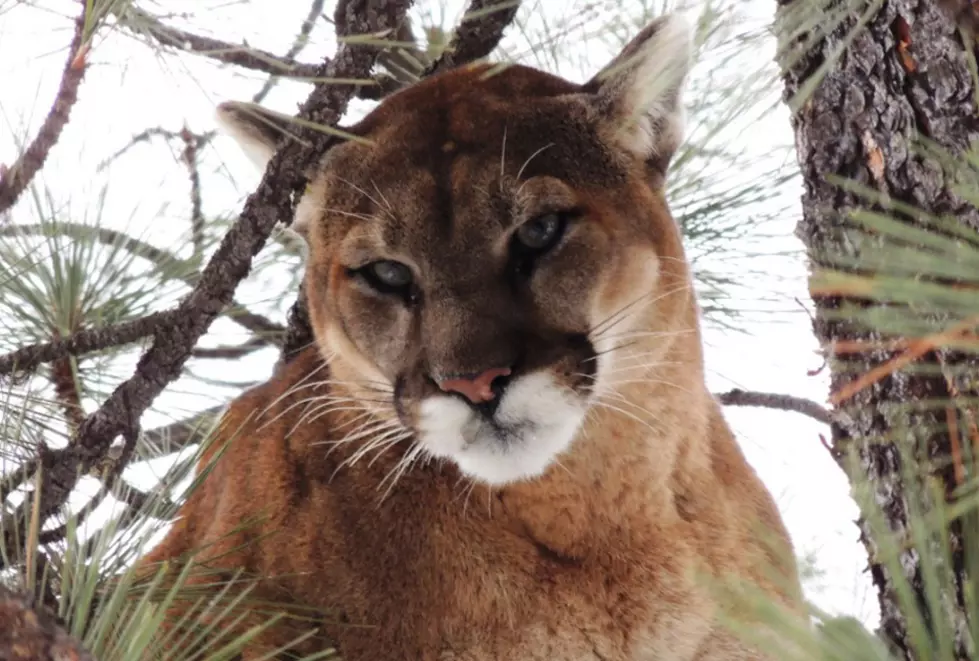
Montana FWP: Make mountain lion management areas huge to reflect cats’ behavior
Montana could have its first cougar management strategy where the boundaries are set by the cats themselves.
On Wednesday, Fish, Wildlife & Parks commissioners and a few sportsmen had to work to wrap their heads around how a proposed plan to manage mountain lions could work within the usual system of hunting districts used with every other species.
The thing is, said wildlife biologist Jay Kolbe, the plan’s lead author, mountain lions aren’t like every other species, so managing them in districts like elk doesn’t work.
In particular, mountain lions can disperse over large distances, which is why they are now showing up in states east of Montana. For that reason, even populations that appear to be isolated are genetically related to nearby populations, because at least a few individuals occasionally migrate.
“All the recent science developed during the past 20 or 30 years tells us, if nothing else, that the scale of lion management needs to be greater than it’s been in the past to ensures the species conservation,” Kolbe said.
The previous mountain lion management plan was written more than 20 years ago, so an update was sorely needed.
Each of FWP’s seven regions around the state has between five and 30 hunting districts that have quotas for every species Montanans hunt.
Kolbe said those are too small for the way mountain lions live. So he divided Montana into four “ecoregions” that contain similar habitat.
Most mountain lions live in the western half of the state, which is divided into three ecoregions: the Northwest, which includes Missoula and points north; the West-Central, which encompasses the Bitterroot Mountains west of Hamilton to the Durfee Hills east of Lewistown; and the Southwest, which runs from the Big Hole Valley to the Absaroka-Beartooth Mountains.
The Eastern ecoregion includes most of Montana’s prairie region.
Under the new strategy, FWP would take public comment and then use ecological data and a new computer model to decide what the mountain lion population should be in each ecoregion.
It would also help the agency by allowing biologists to monitor the populations of each ecoregion – excluding the Eastern region - consistently and on a more regular basis so they can fine-tune the model and the hunt strategy. Sampling three regions is easier and less expensive than trying to cover dozens.
Kolbe assured the commissioners that the hunting districts weren’t going away, although it’s possible in the future that a few may be combined if needed. Certain special districts are necessary where public tolerance is low, such as near Missoula. Also some districts may contain better hunter access than others.
So within each ecoregion, the commission could set quotas for each district to help achieve the objective for the overall ecoregion. It’s similar to
One other advantage of mountain lions: even where quotas have been set too high, populations have bounced back rapidly once agencies “tap the brakes.”
“In the past, without an accurate method to count and monitor populations at a meaningful scale, management was often reactive - some would say over-reactive - and often very controversial. We just didn’t have the data,” Kolbe said. “This is a different way of doing business, but I’d argue it’s better. Ecoregions are just a broader way of looking at population objectives.”
Commissioner Shane Colton of Billings remembered the contentious public meetings in 2006 when FWP was developing the previous mountain lion strategy and wondered what upcoming meetings might hold. He asked Kolbe for reassurance that lions could be managed on such vast scales.
Kolbe said other states, including Washington, have started to switch to using “zone management” for lions.
“It’s the overwhelming consensus of the scientific literature that tells us that’s the only scale where you can effectively manage lions, that you’ll likely fail to meet your objectives at a finer scale,” Kolbe said.
Montana Wildlife Federation spokesman Nick Gevock commended FWP for taking a more thoughtful, scientific approach to managing predators than neighboring states.
“I think – dare I say this with the Legislative session looming and given the litigation around grizzly bears – realizing it’s a much different species, but this could be a really great template for a statewide grizzly plan, which we would like to see,” Gevock said.
The 140-page strategy goes out to public comment until Jan. 11, 2019. The commission will have a final vote during its February meeting.
Once the final version is published, the agency will turn its attention to its elk management plan, which was written in 2005. Much has changed in the past 13 years, including both elk and human populations in Montana.
As the commission considers the details of yet another shoulder-hunt season for elk that could last into February, commissioners are eager to update elk population objectives to learn whether such long-term hunts are needed.
Contact reporter Laura Lundquist at lundquist@missoulacurrent.com
